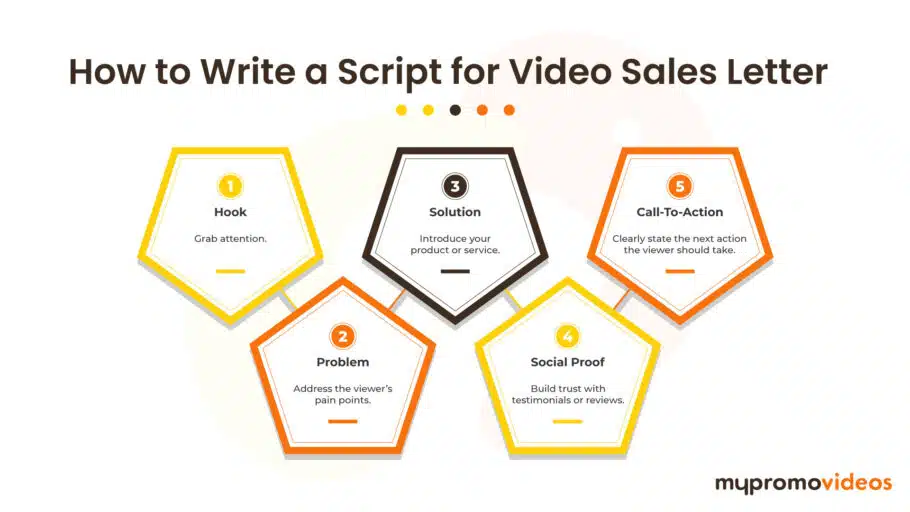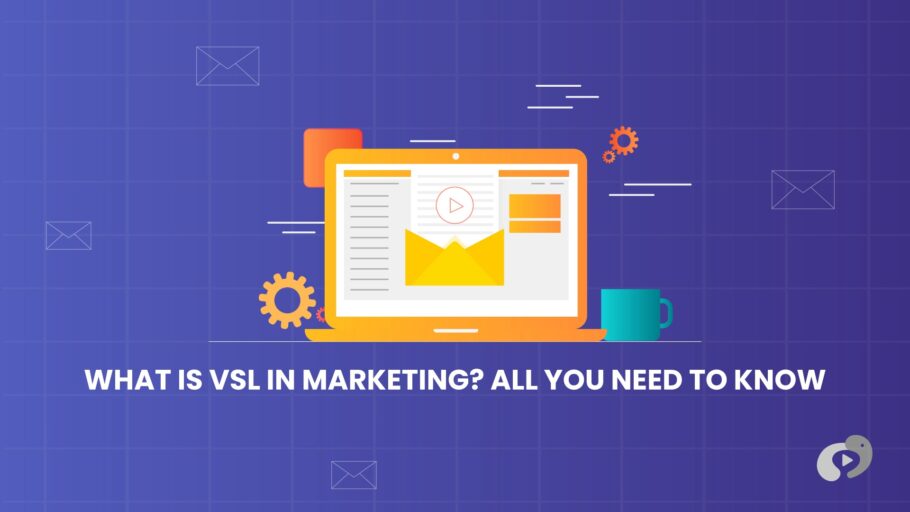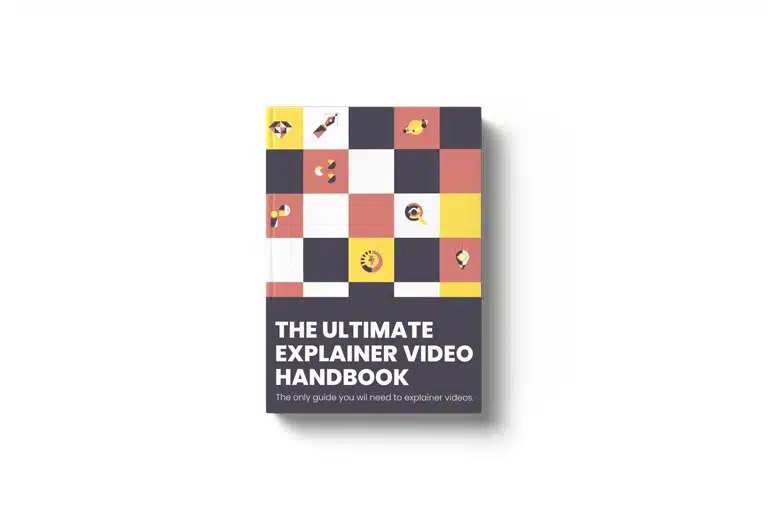Last Updated on September 25, 2024
Article Contents
VSL in Marketing: The Ultimate Guide to Video Sales Letters
A Video Sales Letter (VSL) is an effective marketing tool designed to sell products or services through a short, compelling video. Unlike traditional sales copy, which relies on written words, VSLs engage viewers through a combination of visuals, narration, and persuasive storytelling. In today’s marketing landscape, VSLs are rapidly gaining popularity for their ability to capture attention and drive conversions.
This guide will walk you through everything you need to know about VSL marketing, from understanding the basics to crafting your own high-converting video sales letter.
What is VSL?
The VSL full form in marketing stands for Video Sales Letter. Essentially, it’s a sales pitch delivered through video instead of written content. While the core principles of a traditional sales letter still apply—such as identifying customer pain points, introducing a solution, and providing a clear call to action—a VSL leverages the power of video to make the message more engaging.
By combining visuals, voiceovers, and a narrative structure, a well-crafted VSL can deliver a persuasive message that is not only more entertaining but also more effective in driving viewers to take action.
The Power of Video in Modern Marketing

Videos are one of the most powerful mediums in modern marketing. They grab attention, simplify complex information, and have higher engagement rates compared to text. Consumers prefer watching a short video over reading long blocks of text, which is why VSLs are so successful at boosting conversions.
In addition, VSLs cater to today’s fast-paced online environment. With the average attention span shrinking, video allows marketers to present their pitch quickly and effectively, increasing the chances of turning viewers into customers.
Anatomy of an Effective VSL
A successful VSL follows a specific structure that guides the viewer from initial interest to taking action. Here’s a breakdown of the key elements every VSL should include:
Crafting a Compelling Hook
The hook is the first few seconds of your VSL, and it’s essential for grabbing the viewer’s attention. You need to immediately address a pain point or ask a question that piques their curiosity. This sets the stage for the rest of the video and encourages viewers to keep watching.
For example, “Are you tired of wasting hours on tasks that could be automated?” instantly addresses a common frustration and invites viewers to find out more.
Storytelling Techniques
Storytelling is a powerful way to engage your audience emotionally. A good VSL uses a story arc that relates to the viewer’s experiences, helping them connect with the product or service on a deeper level. Whether it’s a personal story or a customer success story, storytelling can make the solution more relatable and memorable.
Identifying Pain Points
One of the most critical aspects of any sales message is identifying the viewer’s pain points. A strong VSL clearly highlights the problems the viewer is facing and demonstrates empathy for their situation. This builds trust and reassures the viewer that the product or service being offered will address their specific needs.
Introducing Your Solution
Once you’ve identified the pain points, the next step is to introduce your solution. Explain how your product or service directly addresses the problems and what benefits it offers. Focus on the unique features that set your offering apart from the competition.
Make sure to emphasize the direct connection between the pain points and your solution. For example, “Our software reduces your workload by automating tedious tasks, so you can focus on what really matters.”
Building Trust with Social Proof
Social proof is an important factor in persuading viewers to take action. Including testimonials, case studies, or user reviews in your VSL shows that others have benefited from your product or service. This builds credibility and reduces any hesitations viewers may have about making a purchase.
Presenting Your Unique Value Proposition
Your unique value proposition (UVP) is what makes your product or service stand out from the rest. In your VSL, clearly communicate what makes your offer special and why it’s the best solution for your target audience. Whether it’s price, functionality, or ease of use, highlight the most compelling reasons for viewers to choose your product.
Creating Urgency and Scarcity
Adding a sense of urgency or scarcity can prompt viewers to take action more quickly. Mentioning limited-time offers, exclusive bonuses, or discounts can push hesitant viewers to make a decision. For example, “Sign up today and get 50% off, but only for the first 100 customers!”
Delivering a Strong Call to Action
Every VSL should end with a clear and compelling call to action (CTA). Tell your viewers exactly what you want them to do next, whether it’s purchasing a product, signing up for a free trial, or scheduling a consultation. Make the CTA simple, direct, and easy to follow, such as, “Click the link below to get started today!”
Step-by-Step VSL Creation Process
Creating a high-converting VSL requires careful planning and execution. Here’s a step-by-step guide to help you through the process:
Defining Your VSL’s Objectives
Before creating your VSL, define your primary objectives. Are you looking to generate leads, drive sales, or raise brand awareness? Knowing your goals will help shape the content and structure of your VSL.
Researching Your Target Audience
Understanding your target audience is key to crafting a message that resonates with them. Research their needs, pain points, and preferences. The more you know about your audience, the better you can tailor your VSL to address their specific concerns.
Structuring Your VSL Script
A well-structured script is the foundation of an effective VSL. Use a clear structure with an engaging hook, a detailed explanation of the problem and solution, and a strong call to action. Keep the language simple, direct, and conversational, ensuring that the message is easy to understand.
Choosing the Right Visual Elements
Visuals play a crucial role in keeping viewers engaged. Consider using product demos, animations, or text overlays to reinforce your message. Choose visuals that complement your script and make the key points more impactful.
Recording and Editing Your VSL
Once the script is finalized, it’s time to record the VSL. Whether you’re using a professional studio or recording at home, ensure the audio and video quality is high. After recording, use editing software to polish the video, add any necessary graphics or animations, and ensure smooth transitions.
Optimizing for Different Platforms
Your VSL will likely be shared across multiple platforms, such as social media, your website, or email campaigns. Optimize the video format, length, and thumbnail for each platform to maximize engagement. For instance, shorter videos may perform better on social media, while a more detailed version may be ideal for your website.
How to Write a Script for VSL
Writing a strong VSL script involves balancing clarity, persuasion, and engagement. Start with an attention-grabbing hook, address the audience’s pain points, and clearly present your solution. Use a conversational tone that feels personal and direct, keeping the viewer’s attention throughout the video.

Here’s a simple structure for a VSL script:
- Hook: Grab attention.
- Problem: Address the viewer’s pain points.
- Solution: Introduce your product or service.
- Social Proof: Build trust with testimonials or reviews.
- CTA: Clearly state the next action the viewer should take.
Top Tools and Software for VSL Production
Several tools and softwares can help streamline the VSL production process, from scriptwriting to editing. Here are a few popular options:
- Camtasia: Easy-to-use video editing software.
- Veed.io: Browser-based video editing platform ideal for beginners.
- Animoto: Drag-and-drop video creator perfect for marketing videos.
- Final Cut Pro: Advanced video editing software for professional production.
Measuring VSL Success – Key Metrics and Analytics
Measuring the success of your VSL is essential to improving your marketing efforts. Key metrics to track include:
- View Count: How many people are watching your VSL?
- Conversion Rate: How many viewers take action after watching?
- Engagement Rate: Are viewers watching the whole video or dropping off early?
- Click-Through Rate (CTR): How often viewers click on your CTA?
By monitoring these metrics, you can refine your VSLs and improve future campaigns.
VSL vs. Other Marketing Video Formats
How does a VSL compare to other types of marketing videos, like explainer videos or product demos? While explainer videos focus on educating the audience, a VSL is designed to sell. It combines elements of storytelling, sales psychology, and direct marketing to persuade viewers to take immediate action.
Unlike product demos, which showcase a product’s features, VSLs focus more on building an emotional connection with the viewer and driving conversions.
Future Trends in VSL Marketing
As video marketing continues to evolve, VSLs will remain a valuable tool for businesses. Future trends may include the use of AI to personalize VSL content, interactive video elements that engage viewers, and shorter VSLs optimized for social media. Staying ahead of these trends can help marketers create more effective and targeted VSLs.
Conclusion
VSL marketing is an incredibly effective way to boost conversions and engage with potential customers. By mastering the structure and elements of a high-converting VSL, you can create compelling sales videos that not only capture attention but also drive action. Whether you’re new to video marketing or looking to improve your existing strategies, VSLs offer a powerful way to connect with your audience and grow your business.

